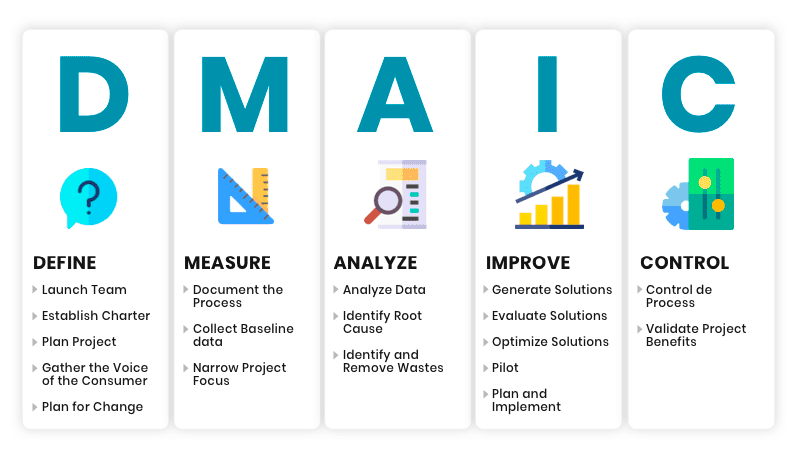Ever wondered how companies fine-tune their operations and boost quality? A powerful method called DMAIC is often the secret ingredient. DMAIC stands for Define, Measure, Analyze, Improve, and Control. Think of it as a step-by-step recipe for solving problems and making things work better. Just like any good recipe needs the right ingredients, DMAIC relies on specific tools for each phase. Let’s explore these helpful instruments.
DMAIC tools are like specialized gadgets that help you at each stage of the DMAIC process. They’re designed to make data collection, analysis, and decision-making easier. Want to understand how these tools work? Let’s break it down:
Define: This phase is all about understanding the problem. Tools like a Project Charter (think of it as your project’s instruction manual) and SIPOC diagrams (a visual map of your process) help clarify goals and who’s involved. Understanding what your customer wants is also important, so tools like Voice of the Customer (VOC) Analysis are used.
Measure: Here, we gather data to see how things currently operate. Tools like Data Collection Plans (your strategy for gathering information) and Process Maps (visual representations of your process) are key. We also need to make sure our measurements are reliable, which is where Measurement Systems Analysis (MSA) comes in.
Analyze: This is where we play detective and figure out why the problem exists. Tools like Cause-and-Effect Diagrams (also called Fishbone diagrams) help us brainstorm potential causes. Pareto Charts help us prioritize the most important causes, and Hypothesis Testing helps us confirm our suspicions with data.
Improve: Now we create and test solutions! Brainstorming helps us come up with ideas, and Failure Mode and Effects Analysis (FMEA) helps us anticipate potential problems with our solutions. Design of Experiments (DOE) helps us find the best solution, and Pilot Testing lets us try it out on a small scale first.
Control: This phase is about making sure the improvements stick. Control Charts help us monitor the process and make sure it stays on track. Tools like the 5S Methodology (a system for workplace organization) and Standard Operating Procedures (SOPs) help us maintain the gains we’ve made.
Choosing the right DMAIC tool is like choosing the right tool for a job. It depends on what you’re trying to achieve in each phase. Sometimes, it’s helpful to look at examples. For a deeper dive into these tools and how they are used, check out this informative blog post on DMAIC tools by Sprintzeal. It provides a comprehensive overview of the various tools and techniques used in each phase.
 :
https://in.pinterest.com/sprintzeal/
:
https://in.pinterest.com/sprintzeal/












